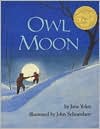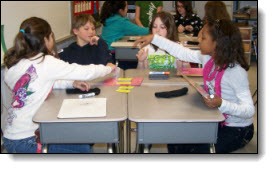How to Make Sure Your Reading Lesson Sticks: 9 Fun and Easy
Activities with Post-Its
Reading is one of the most important
aspects of most English language teaching programs,
but it can also be one of the toughest
for you and your students.
Preparing for, understanding and assessing reading can all be a challenge. Even great
reading
activities can be simple, however. Here are 9 ideas you can
use in your reading program that require
nothing more than some sticky notes. Not only that, they are
fun and easy, too!
Try These 9 Fun and Easy Activities with
Post-Its
1. 1
Questions
While Reading
Asking questions while reading can be
one of the greatest aids to understanding a passage, either at home or in
class. For ESL students, though, questions can become a juggernaut
making the end of the reading unreachable. Students may become frustrated, and
if they had finished the selection some of their questions may have been
answered by the remainder of the article. To help your students over this
hurdle, give each student several post-its to use as he reads. When he has a
question about the passage or finds himself confused, have him write the
question on the post-it and stick it near the place he had the question and
continue reading. Then, when he has reached the end of the passage, have him
return to his notes and see if any of his questions were answered. Any
remaining questions, he brings to a reading group of three or four and asks his
classmates if they know the answers. Collect any questions that remain after
the discussion groups and talk about them as a class. Your students will
eventually have all of their questions answered. Through this activity, your
students will also recognize that having questions as you read is okay,
and that the questions are often answered by the end of the reading selection.
2. 2
Vocabulary
Preview
Before you introduce a new set of
reading vocabulary to your students, see what they already know or can decipher
about the given set of words. Write the new vocabulary
on the board and have groups of three or four students copy each word on to its
own post-it. Then ask the students to sort the words in a way that seems
logical to them. They can use the knowledge they already have of the words,
word roots, or part of speech endings. If possible, have them sort the words on
the inside of a file folder, and can keep the words sorts until after the
reading is complete. Then, once they have read the words in context and learned
what they mean from the reading selection, have the same groups resort the same
set of words. Most likely, they will decide on a different sorting logic after
learning the meaning of the words.
3. 3
Comprehension
Check
You can use post-its to check your
students’ reading comprehension as well as teach them how to write a summary.
Break your class into groups of four to six students, and assign a reading
selection to the group. Once everyone has completed the selection, have your
students close their books, and give each person three post-it notes. On each
of these notes, each person writes one event or piece of information from the
reading selection. Encourage your students to write the most important events,
and check to make sure everyone has some understanding of what they have read
by reading the notes. Then, the groups of students come together and put all
their post-its in sequential order. They will find it challenging to remember
all the events in the reading selection. Once the events are in order, you can
show your students how to write a summary from the main points they chose from
the story. Your students will not become bogged down in the details of the
story when they write from their own highlights!
4. 4
Reading
Cloze
You can also use the smallest post-its
to create a cloze exercise for your students.
Type out a reading passage in a large font, and use the small post-its to
cover every fifth word. (Note: you may have to adjust the spacing of the
words to make the post-its fit.) Then, challenge your students to write an appropriate
word on each post-it to complete the passage. They can check to see if their
words match the original words by looking underneath the post-it, but any word
which logically and grammatically completes the blank would be an acceptable
answer.
5. 5
KWL
Board
If you use KWL charts (Know, Want to
Know, and Learned) with your students before reading a new reading
selection, try this variation, which uses post-it notes.
Instead of having students complete individual charts, have them write what
they know about a given topic on post-it notes – one idea on each note. As a
student completes a note, announce to the class what is on the note and stick
it to your board. As your students hear what their classmates know, they may
remember facts of their own. Continue until everyone has written down all of
their ideas and you have posted them. In effect, your class will be
brainstorming everything they know about the day’s topic, but the simple
addition of sticky notes will make the activity more energetic and entertaining.
Once the first part of the activity is done, have students write down any
questions they might have about the topic of the day on separate post-it notes.
(Use a different color note, again one note per idea.) Follow the same
procedure as you did with the first part. After your class reads their
selection, have them write things that they learned on a third color of
post-it. These go on the board, too. When what a student learned answers one of
the questions from the second part of the activity, post the third note next to
the question note.
6. 6
Book
Reviews
Keep a supply of post-its near your
classroom library. When a student completes a book from
the library, he writes a one sentence review of the book on a post-it note. He
can write what he liked, what he didn’t, or any other thoughts he has after
reading the book. Then, when your other students are choosing their next books,
they can read the review that the first reader wrote. After this second person
finishes the book, she writes her own review and sticks it in the front of the
book. The reading and reviewing continue in this manner, and by the end of the
school year, you will have a deep understanding of which books are working for
your class and which aren’t. Moreover, your students will have peer feedback at
their fingertips when it is time to choose a new book.
7. 7
Quick
Questions
You can get your students to think
critically as they read by placing post-it notes in your classroom library
books. Write several sticky notes for each book that you have in
your classroom, and ask questions such as these: What do you think will happen
next? Did the main character make the right decision? What advice would you
give the character? Then, place these notes strategically in your classroom
books. When a student comes across one of the notes during his or her reading,
he answers the question on a separate post-it note, writes the page number on
which he found the question, and sticks the note to the cover of the book. You
can then check your students’ comprehension by simply looking at the covers of
their books and their answers to your quick questions.
8. 8
Step
by Step Summary
For students who may have a difficult
time writing a summary of a large reading selection or chapter book, they can
use post-it notes to write a summary as they read.
Simply have students stop at the end of each chapter and write one sentence on
a post-it summarizing what happened in that chapter. Then, at the end of the
book, the student takes all the notes and puts them together to complete a
summary of the entire novel.
9. 9
Read
Aloud Comments
If you find your students either
interrupting you or giving you blank stares
when you read to the class, you can use post-it notes to make a smoother and
more effective read aloud experience. Whenever a student has a comment or
question while you are reading to the class, he writes in on a post-it note. He
can then stick the post-it to the front board once your reading session is
over. You can then answer the question for the whole class or write a reply
post-it to that specific student. If you are looking for feedback from all of
your students, you can also hand out post-it notes to everyone after you are
finished reading and have everyone write something that confused them,
something that they thought was interesting, or something that they thought of
as you were reading.
The best classroom activities do not
have to be complicated.
And what could be easier than keeping a
few sticky notes in strategic places in your classroom? You will have a better
read on what your students like and what they understand, and they will feel
like they are being heard when you use these understated sheets of paper to
open the channels of communication in your class!





 Cooperative Learning Pages
Cooperative Learning Pages





